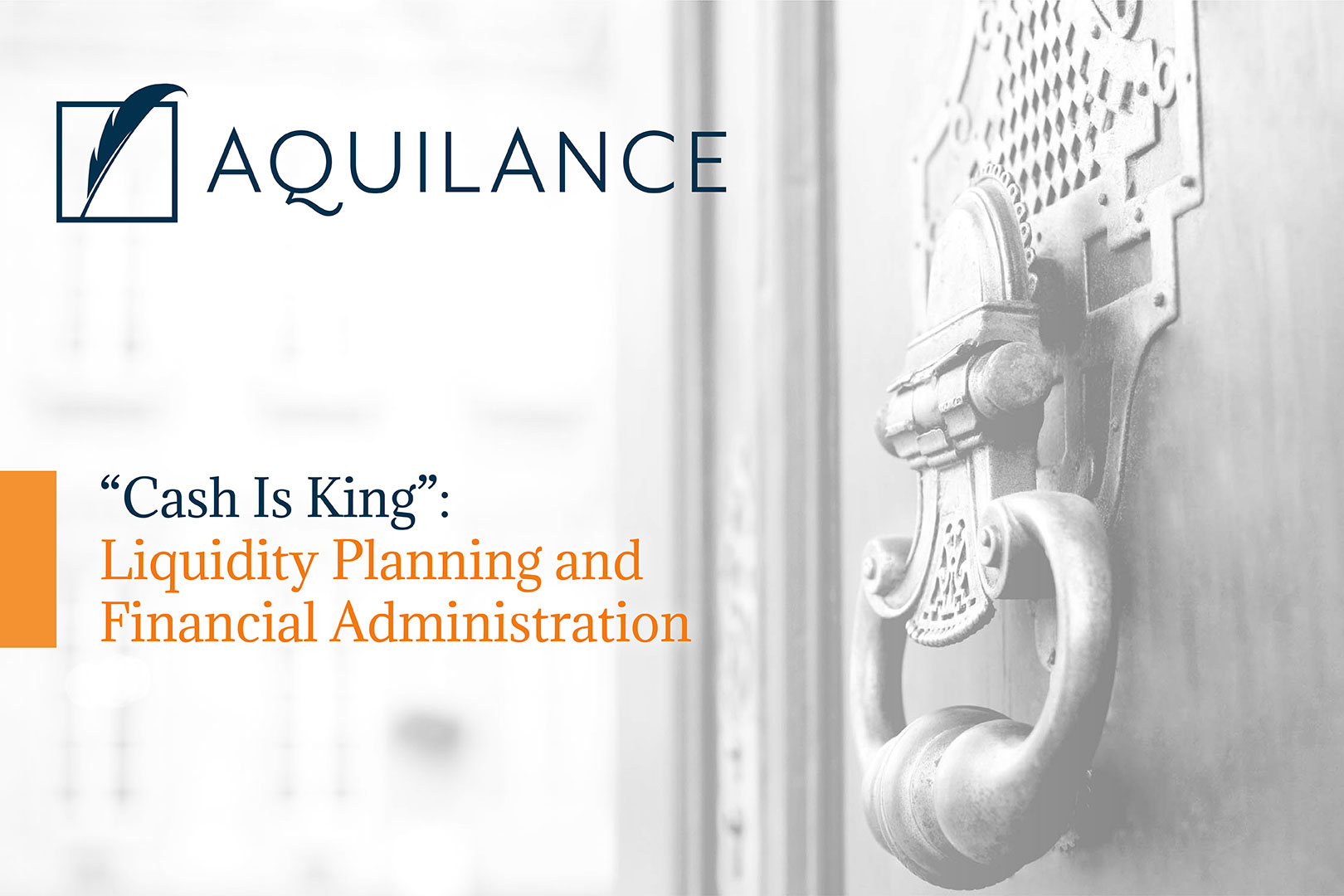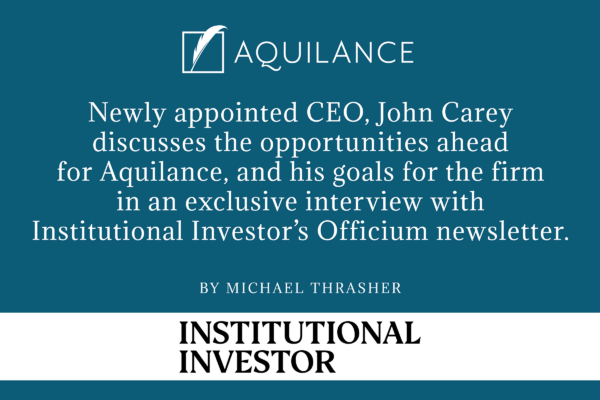Cash Flow: A Linchpin in Wealth Management
The phrase “Cash is King” takes on profound significance when catering to ultra-high-net-worth individuals (UHNWIs) and families with complex financial needs, where understanding cash flow is essential to a broader wealth management plan. This white paper explores the critical intersection of liquidity management and financial planning for wealth advisors serving UHNWIs and families. Through greater attention to this often-overlooked area and leveraging better information, wealth advisors can enhance their planning and investment effectiveness, gain greater “wallet” share, increase referrals from Centers of Influence, and deepen client satisfaction.
Advisors often feel a sense of satisfaction and confidence when they can offer a one-stop-shop, holistic offering for their clients’ financial needs and legacies. Yet, historically, the private wealth community has been behind the curve on supporting the financial administration challenges that their clients face including truly understanding client spending and cash flow needs. In the latter case, advisors and family offices can aid clients and their principals on what they can do today to secure their future wealth by mapping out all assets, their fixed and discretionary spending, major financial goals, and major anticipated purchases, clearly and with certainty. This can allow both the advisor and client to take advantage of time-sensitive investment opportunities, advanced estate planning, and the timing of major purchases with greater comfort and clarity. Such a context would provide clarity to questions such as, do we have the liquidity for this investment or planning strategy, where will the assets come from, and how will this change the expense side of my ledger?
Wealth advisors who are equipped with the information provided by good bookkeeping, bill pay, and partnership accounting practices can provide strategic liquidity planning and more confidently guide their clients through the complexities of their financial journeys and major life events. This approach not only elevates the advisor’s practice management, but it can also cultivate enduring client-advisor relationships based on addressing a client’s long-term financial and non-financial well-being.
Aquilance estimates that less than 10% of families with $50mm or more of liquid assets know their annual spending rate. Advisors who leverage cash flow planning with family office solutions and personal bookkeeping expertise position themselves as invaluable partners, capable of addressing the multifaceted needs of their clients. The efficiencies gained through professionalized financial administration can save time, mitigate potential headaches, and also deepen the advisor’s relationship
as a client’s true “quarterback.”
“When I purchased my second home, knowing my existing spending pattern and what the new home would cost, the Aquilance team helped me understand what my additional cash needs would be. My estate planning advisor was also able to help me understand where the cash flow would come from.”
José Bautista, Client, Retired MLB All-Star, and Business Builder
Seeing The Bigger Picture: Considerations for Client Held-Away Assets
Understanding a client’s assets held away is crucial for financial advisors to provide tailored advice and strategies. These assets, ranging from bank accounts to retirement plans and offshore investments, contribute to the complexity of a client’s financial situation. Advisors should be interested in held-away assets as they allow for better visibility across portfolio allocation, risk management, and tax planning. Additionally, knowledge of these assets enables advisors to suggest filling gaps in the portfolio, exploring new investment opportunities, and potentially rebalancing holdings based on a client’s entire portfolio, not just assets under management with a single advisor.
To advise clients with held-away assets effectively, a complete and comprehensive understanding of a client’s entire financial universe needs to be had. Advisors can initiate open discussions about these assets during onboarding or periodic client meetings by asking to review a client’s Personal Financial Statement, but these discussions can often be difficult to have, as advisors are often hesitant when it comes to “collaborating” with direct competitors. The risk (or even just perception)
of possible client poaching is very unnerving and can cause friction among advisors. These are perfect examples of when working with an outsourced, third-party financial administration service provider can benefit not only the client, but their entire financial team. Aggregated and accurate financial reporting, prepared by an independent firm whose services do not compete with any of a client’s advisors, benefits everyone involved. These tools and services are objectively transparent, enhancing advisors’ ability to understand a client’s financial positions and offer comprehensive advice based on the intelligence and data collected. Ultimately, gaining insight into held-away assets not only improves client outcomes but also presents opportunities for business growth by adding value to a client relationship more broadly.
Understanding assets held away is not only crucial for effective financial planning but also intersects with broader economic trends, such as Federal Reserve policies and interest rates. In today’s economic landscape, where the Federal Reserve plays a pivotal role in shaping monetary policy, interest rate fluctuations can impact various investment vehicles, including held-away assets. For instance, a rise in interest rates could affect the performance of cash balances, savings accounts, and fixed income investments held away from advisors. Conversely, a low-interest-rate environment may incentivize clients to explore alternative investment opportunities, potentially leading to changes in their held-away asset allocations. As advisors navigate the complexities of managing a client’s spending habits and assets held-away, it becomes essential to stay attuned to both microeconomic factors, such as individual client preferences and goals, and macroeconomic factors, including Federal Reserve policies and interest rate movements. By incorporating these insights into their advisory practices, advisors can enhance client experiences, optimize portfolio allocations, and drive business growth.
“As a 40-year trust and estate lawyer that has moved into a Multi-Family Office, I have been blown away at the quality of the reporting and how Aquilance provides me the information that I really need to understand both a client’s cash flow and their balance sheet, in the latter case what is in and out of the estate. If I knew this was available or if financial advisors had this information to share with me as part of how I work with clients, I would be more inclined to refer those advisors in the future because of the value that this brings to being able to do my job and work collaboratively with the advisor and the family.”
Michael Rubenstein, Head of Estate and Wealth Planning, Pennington Partners & Co.
Let’s look at a simple Case Study in Capital Call Management, combined with Aquilance’s cash flow planning for held-away assets:
Clients who come to us typically have large balance sheets and lots of free cash flow from various sources of income, yet they struggle with managing capital calls from various limited partnership investments.
They often find themselves navigating capital calls alongside paying their monthly bills in a timely manner.
Recently, we had a family where their advisor did not know the scope of their private investments because there were held-away assets. The advisor was unaware the private investments required capital calls and had not incorporated the client’s liquidity needs into the client’s investment plan. The client also did not have a clear view of their cash flow and annual spending and was struggling to put together a personal financial statement in seeking financing for a new home.
When Aquilance pulled together a consolidated balance sheet and a statement of capital call commitments, the advisor and the client were able to adjust their portfolio to effectively accommodate their client’s liquidity needs. In addition, the advisor worked with the family to execute the next stage of estate planning better understanding their balance sheet and cash flow. They ultimately created a family investment partnership for the family.
This process has led to a deeper conversation about setting up a management company for the family that improves governance including how the family deducts investment expenses under the Tax Cuts and Jobs Act of 2017.
About us:
Aquilance is run by a team of executives with deep financial industry expertise, as well as a dedicated employee base with 10+ years of experience on average, who are devoting their careers to the families and advisors whom we serve. The longevity of both client relationships and employee tenure underscores our dedication to client needs and commitment to their continued success. This is equally beneficial for asset managers and trusted professional advisors who rely on these services to advise clients.
Aquilance provides transparency into family finances through personal bookkeeping and securely managed bill pay using proprietary technology and best practices, multi-entity accounting across a family’s trusts, holdings, and investment entities, including complex partnerships, and may also include payroll services, assistance with insurance review, and much more.
Each client family is paired with a dedicated relationship manager and team to manage onboarding and design of a personalized roadmap for long-term success. This team-based, tech-enabled approach ensures nothing sis missed, offering clients and their professional advisors a comprehensive view of their financial matters. All of this is underpinned by a level of personalization that is deeply ingrained in the firm’s 37-year history.






